So – How much weight have you added? – Full Brakes mainly of the Hornby variety
In an earlier Post I detailed the construction of some corridor connectors for my Bachmann Collett coaches. I have now added a Hornby Hawksworth Full Brake coach.
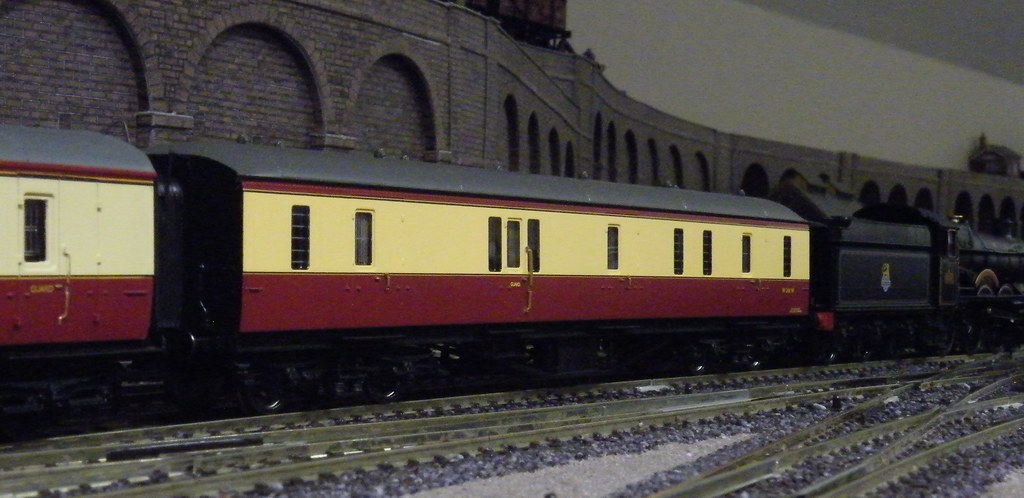
I like the look of the Hornby Hawksworth coaches, perhaps with the exception of the corridor connectors, which could well be the subject of a separate Post. I bought my first Hornby Hawksworth Full Brake coach back in October 2010 for use with a rake of ‘express coaches’. Most recently I have added a Full Brake to the local ‘semi fast’ set. Initially I had problems keeping the Hawksworth Brake on the track. At one particular location where there are both horizontal and vertical curves the Hawksworth coach at the front of a seven coach train would jump the track.
In my opinion the Hornby Hawksworth coaches are very light weight and I solved the derailment problems by adding some additional lead ballast. I think the Table below might be quite instructive. This confirms the low weight of the Hornby Hawksworth Brake relative to other commonly available coaching stock and shows that I increased the weight by 35 gm to a level comparable with Bachmann Mk1s.

Table of weights of some commonly available coaching stock.
To add ballast, the coach has to be disassembled. The underframe of the Hornby Hawksworth coach is fixed to the body shell by clips protruding from the glazing. These clips can be carefully ‘eased’ with a small screwdriver to enable the coach to be pulled apart. The plastic used for the glazing is very brittle and I broke one of the clips. However not to worry, the brittle plastic is perfect for gluing back together with a solvent such as MEK / Butanone.
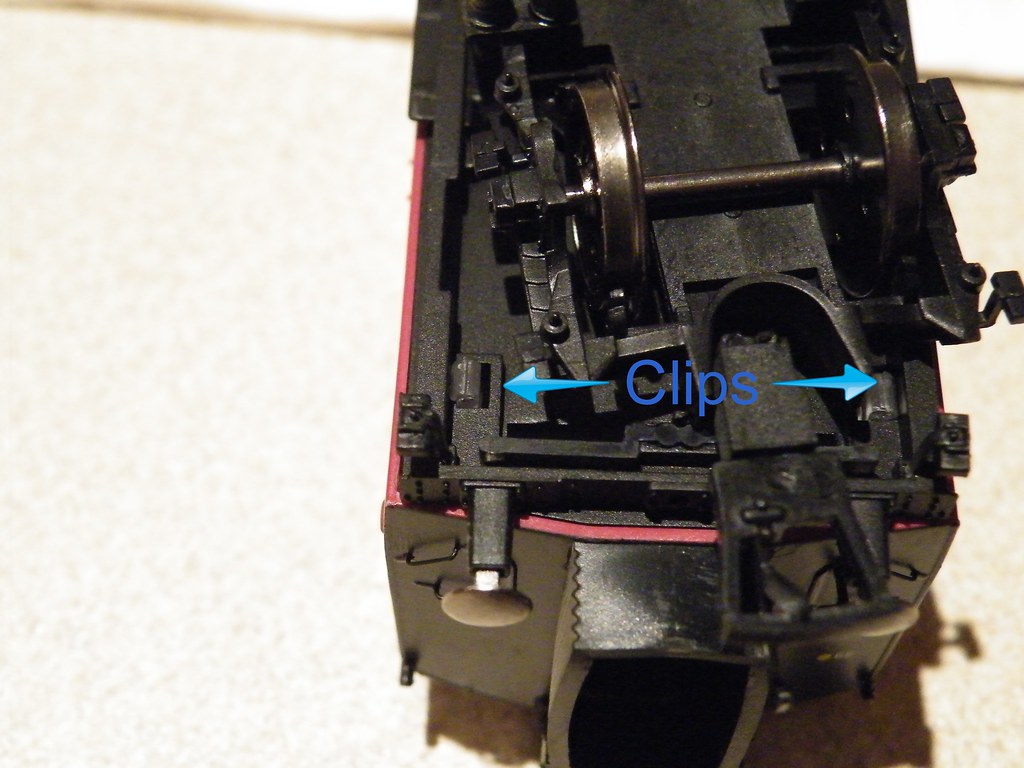
Underside of Hornby Hawksworth Brake
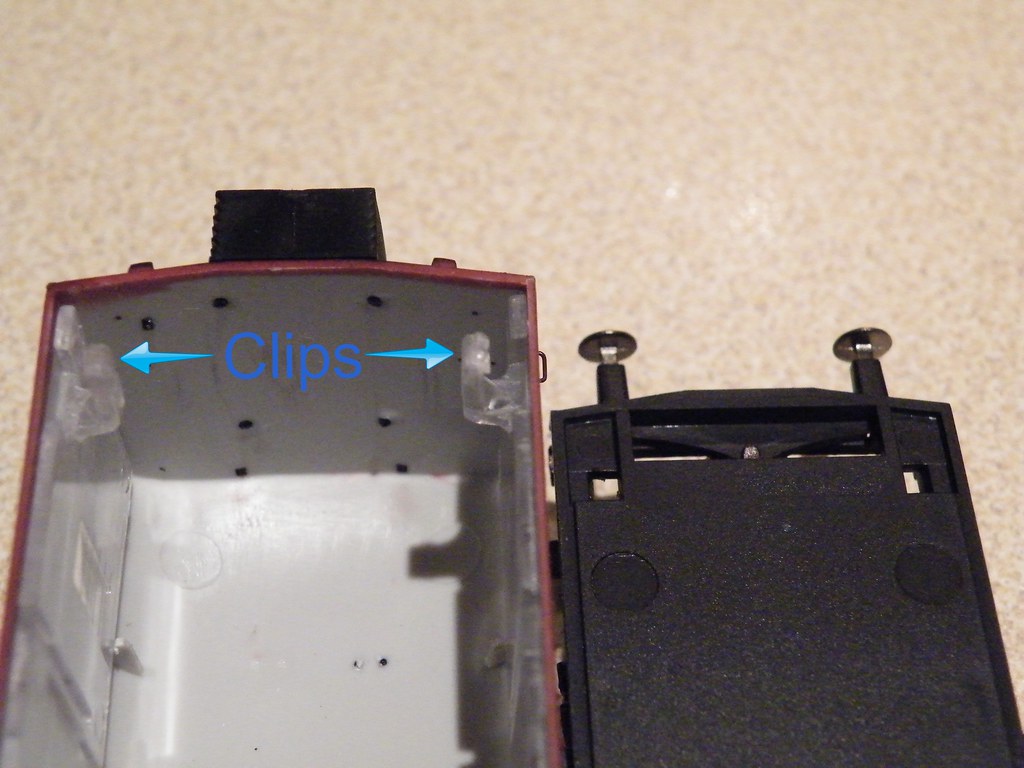
Hornby Hawksworth Body Shell and Underframe separated
Finally a picture showing what 35 gm of lead looks like:
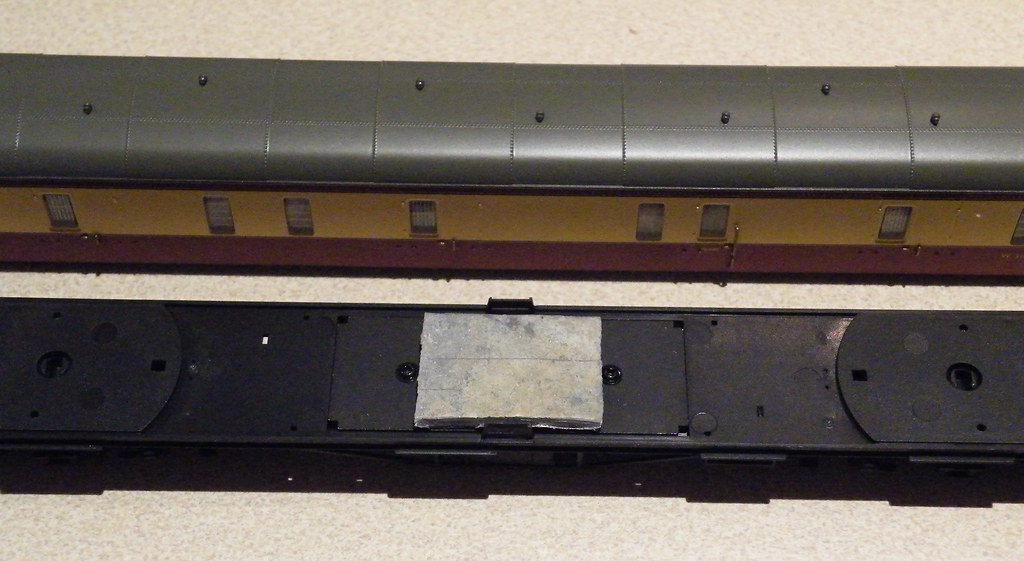
Sheet lead attached using double sided tape
Moving on the view below shows the relatively new Hornby Gresley Full Brake pictured here with its younger Bachmann Thompson counterpart.
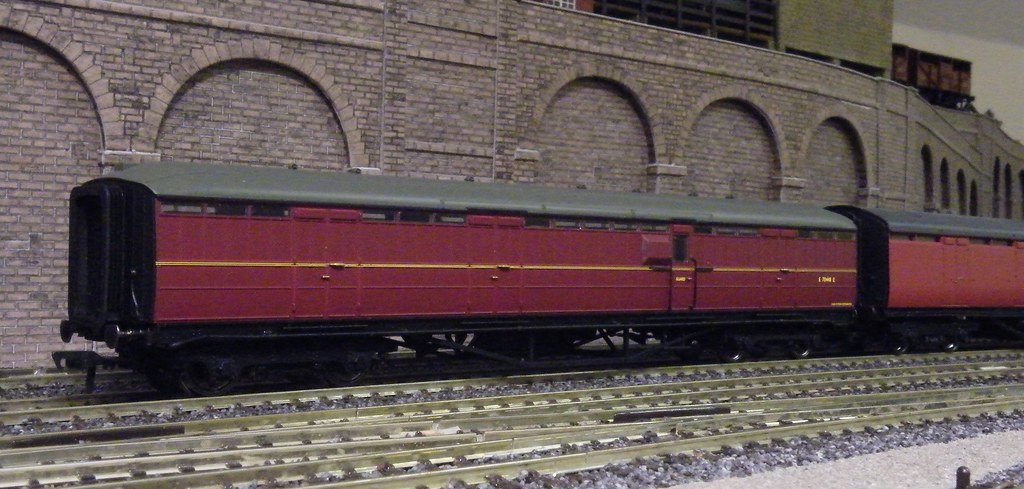
The Hornby brake is to replace ‘one that I made earlier’ from an Ian Kirk kit bought at the Kings X Model shop for £8.25 back in October 1986.
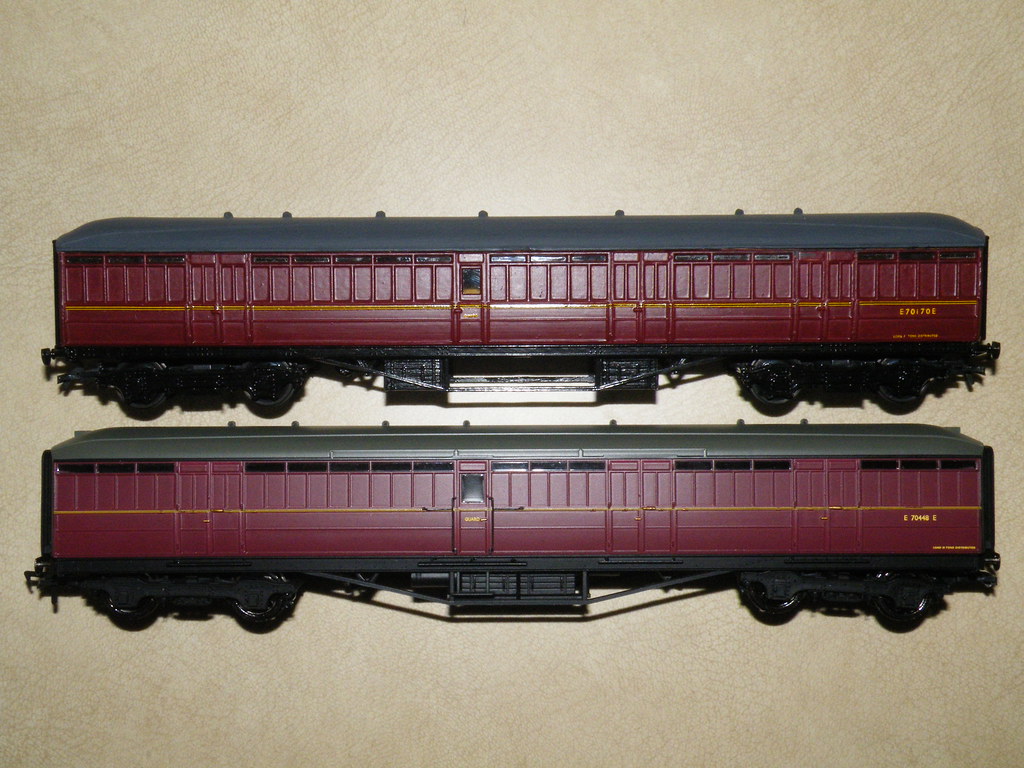
Kirk kit (top) and Hornby model (bottom)
The Kirk kit makes up into a very good model. The most obvious difference between my two models is the lack of handrails for the Kirk kit. Presumably these were to be made and fitted by the purchaser – something that I never got round to doing!
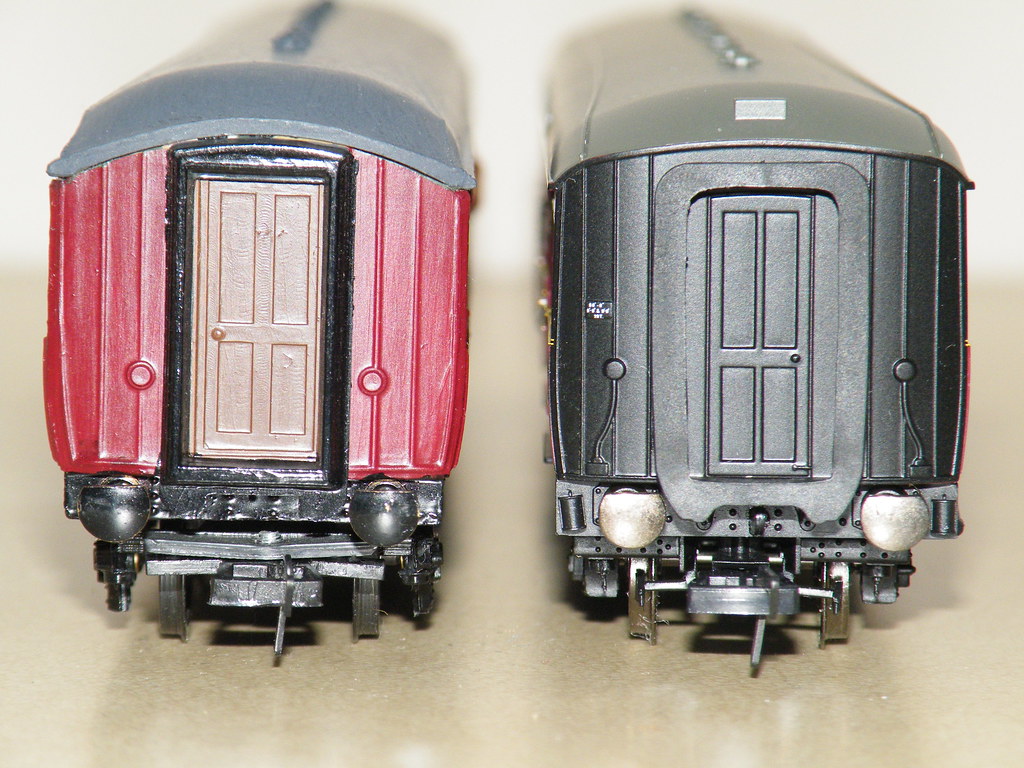
Kirk kit (left) and Hornby model (right)
I might also say that the roof profile of the Kirk kit is perhaps a touch too heavy as shown above in this end view.
As to the running qualities of the new Hornby model - it is too early to tell. I have had occasional problems with Bachmann GUVs at 120 gm, so the performance of the Hornby Gresley at 127 gm will be interesting.
On that ‘merry‘ note something to look forward to for 2013. Best wishes to you all out there.
-
 3
3


.thumb.jpg.60c53fcbcaa34017b05b8919d1a9e6d2.jpg)

15 Comments
Recommended Comments
Create an account or sign in to comment
You need to be a member in order to leave a comment
Create an account
Sign up for a new account in our community. It's easy!
Register a new accountSign in
Already have an account? Sign in here.
Sign In Now